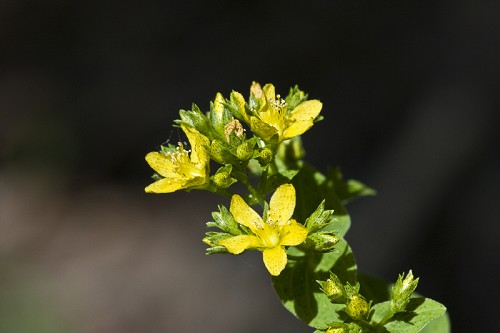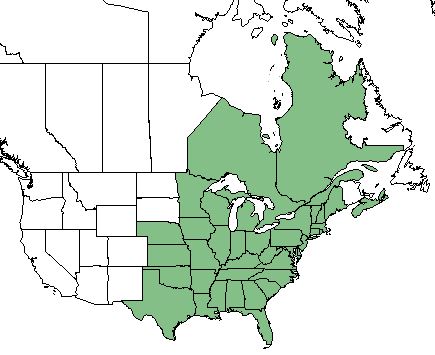Difference between revisions of "Hypericum punctatum"
(→Ecology) |
|||
| Line 1: | Line 1: | ||
{{italic title}} | {{italic title}} | ||
| + | spotted St. Johnswort <ref name= "USDA"> [https://plants.usda.gov/core/profile?symbol=CEAM USDA Plant Database]</ref> | ||
<!-- Get the taxonomy information from the NRCS Plants database --> | <!-- Get the taxonomy information from the NRCS Plants database --> | ||
{{taxobox | {{taxobox | ||
Revision as of 19:26, 14 June 2018
spotted St. Johnswort [1]
| Hypericum punctatum | |
|---|---|

| |
| Photo by the Southeastern Flora Plant Database | |
| Scientific classification | |
| Kingdom: | Plantae |
| Division: | Magnoliophyta - Flowering plants |
| Class: | Magnoliopsida - Dicots |
| Order: | Theales |
| Family: | Clusiaceae |
| Genus: | Hypericum |
| Species: | H. punctatum |
| Binomial name | |
| Hypericum punctatum Lam. | |

| |
| Natural range of Hypericum punctatum from USDA NRCS Plants Database. | |
Contents
Taxonomic Notes
Synonym: H. subpetiolatum (E.P. Bicknell)
Variety:none
Description
H. punctatum is a perennial forb/herb of the Clusiaceae family native to North America. [1]
Distribution
H. punctatum is found throughout the eastern United States and up into Eastern Canada, specifically Ontario and Quebec. [1]
Ecology
Habitat
H. punctatum has a low tolerance for drought. It is tolerant of shade. [1] It is commonly found in fields and woodland borders.[2]
Phenology
Flowers bloom in the early summer months. [1]
Fire ecology
H. punctatum is not a fire resistant forb but has a mild tolerance to fire. [1]